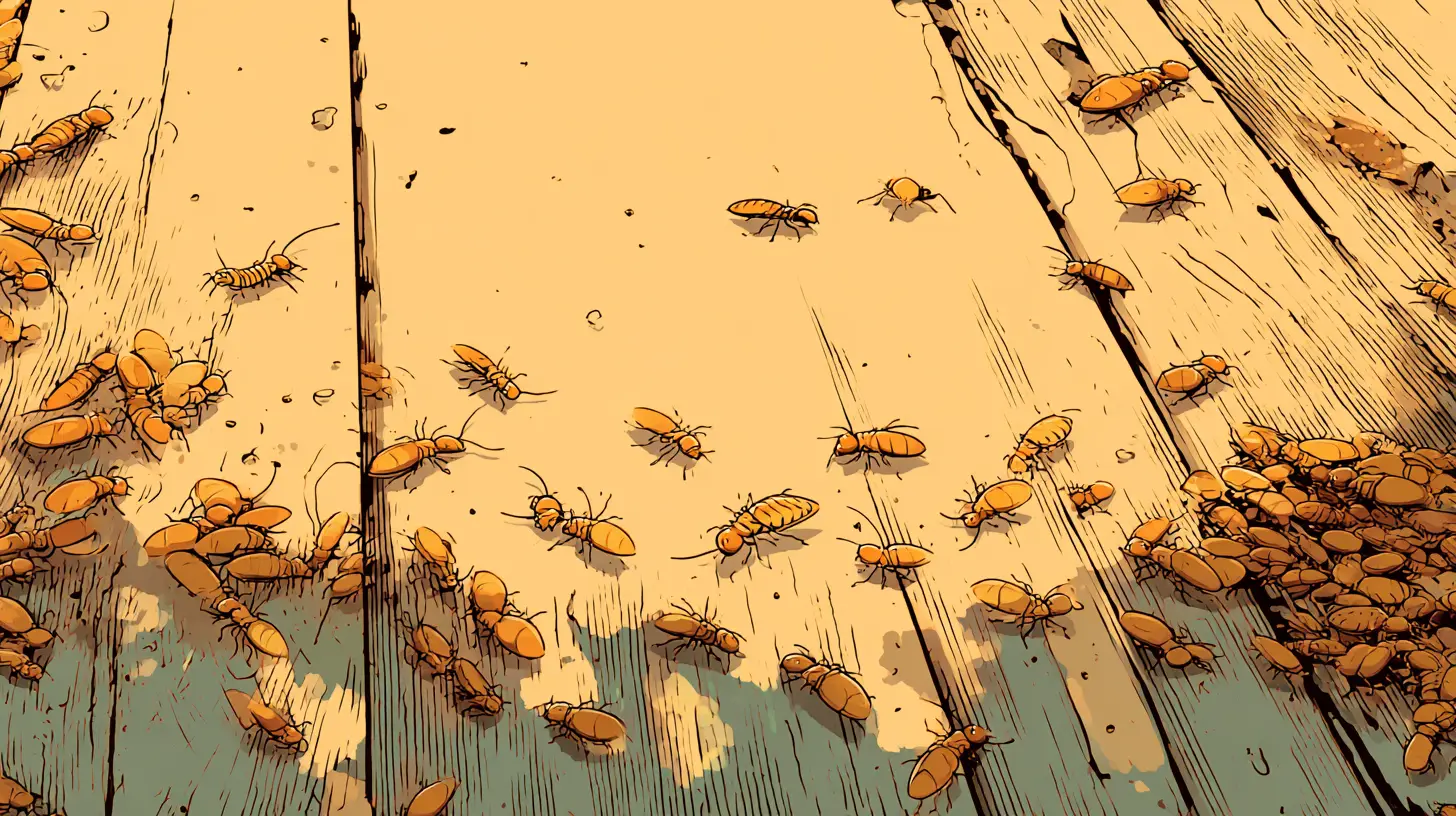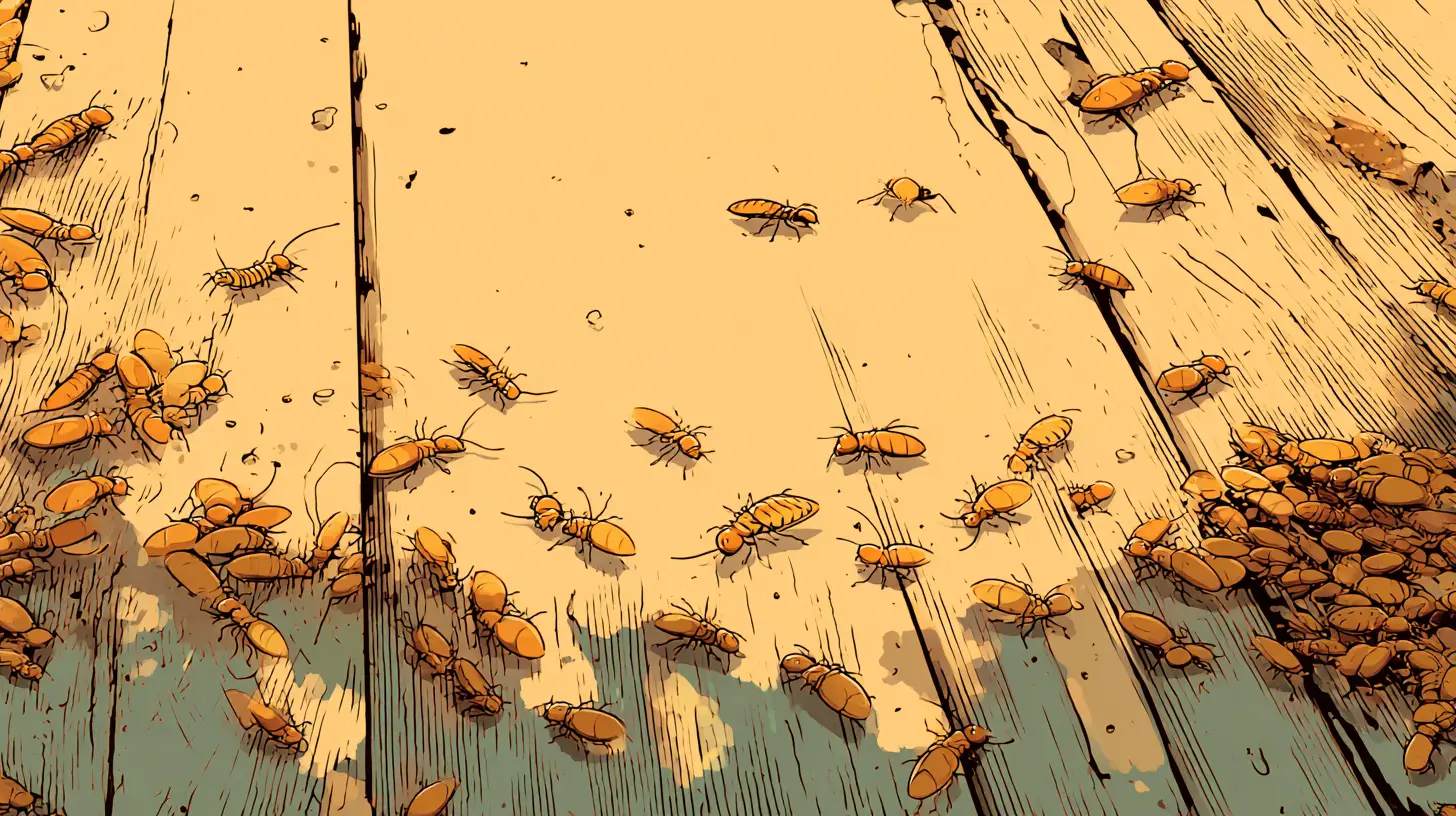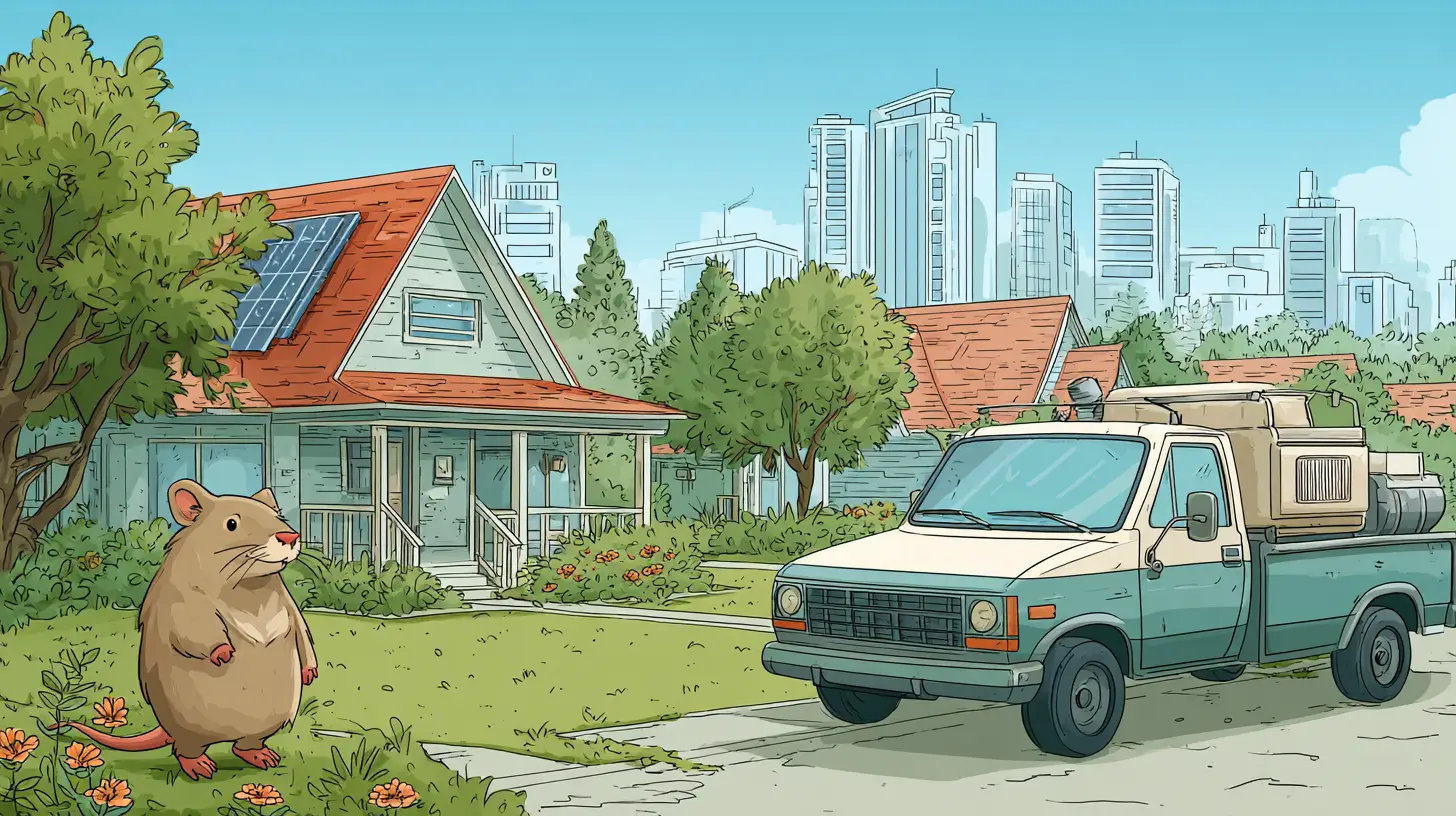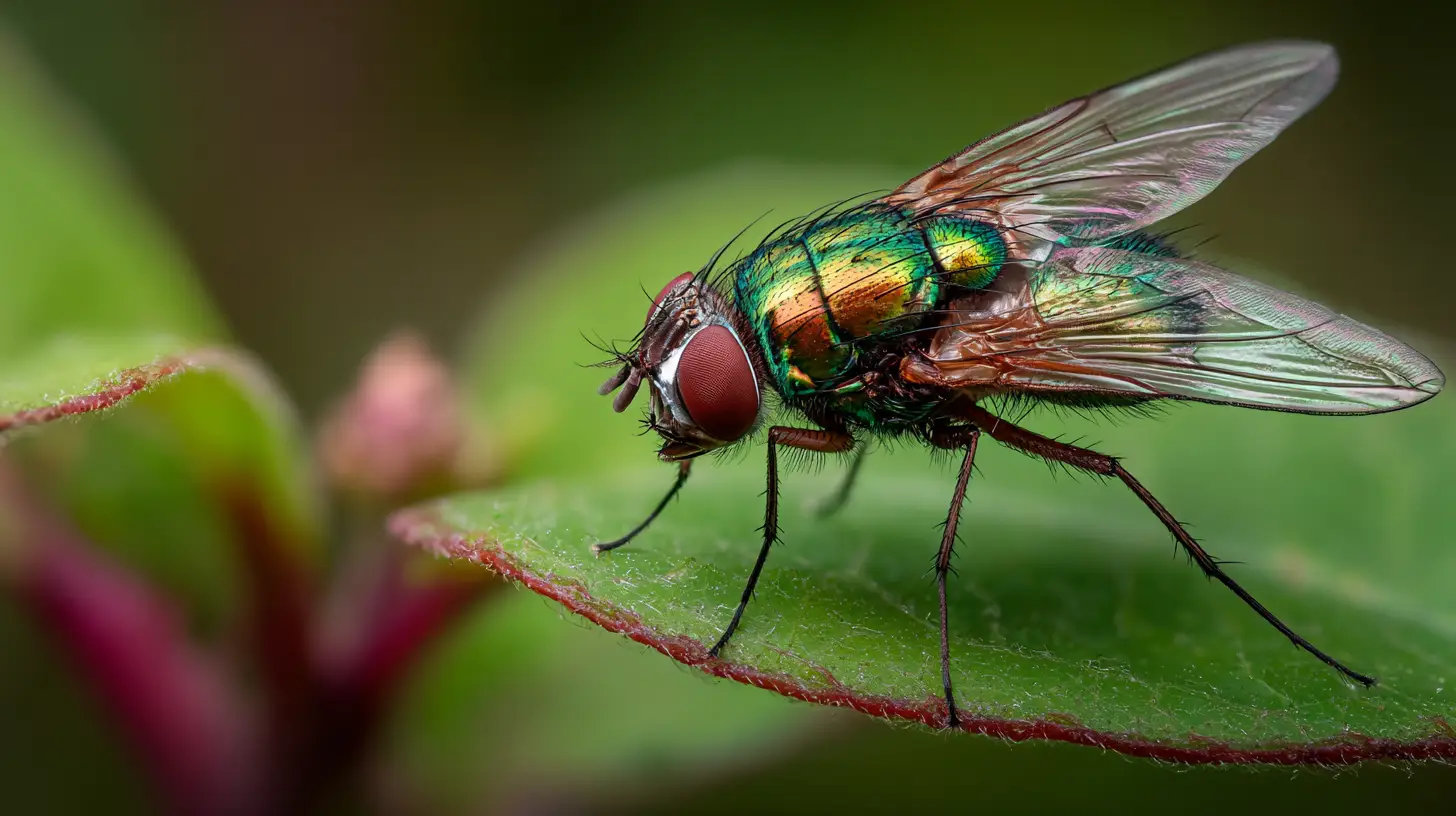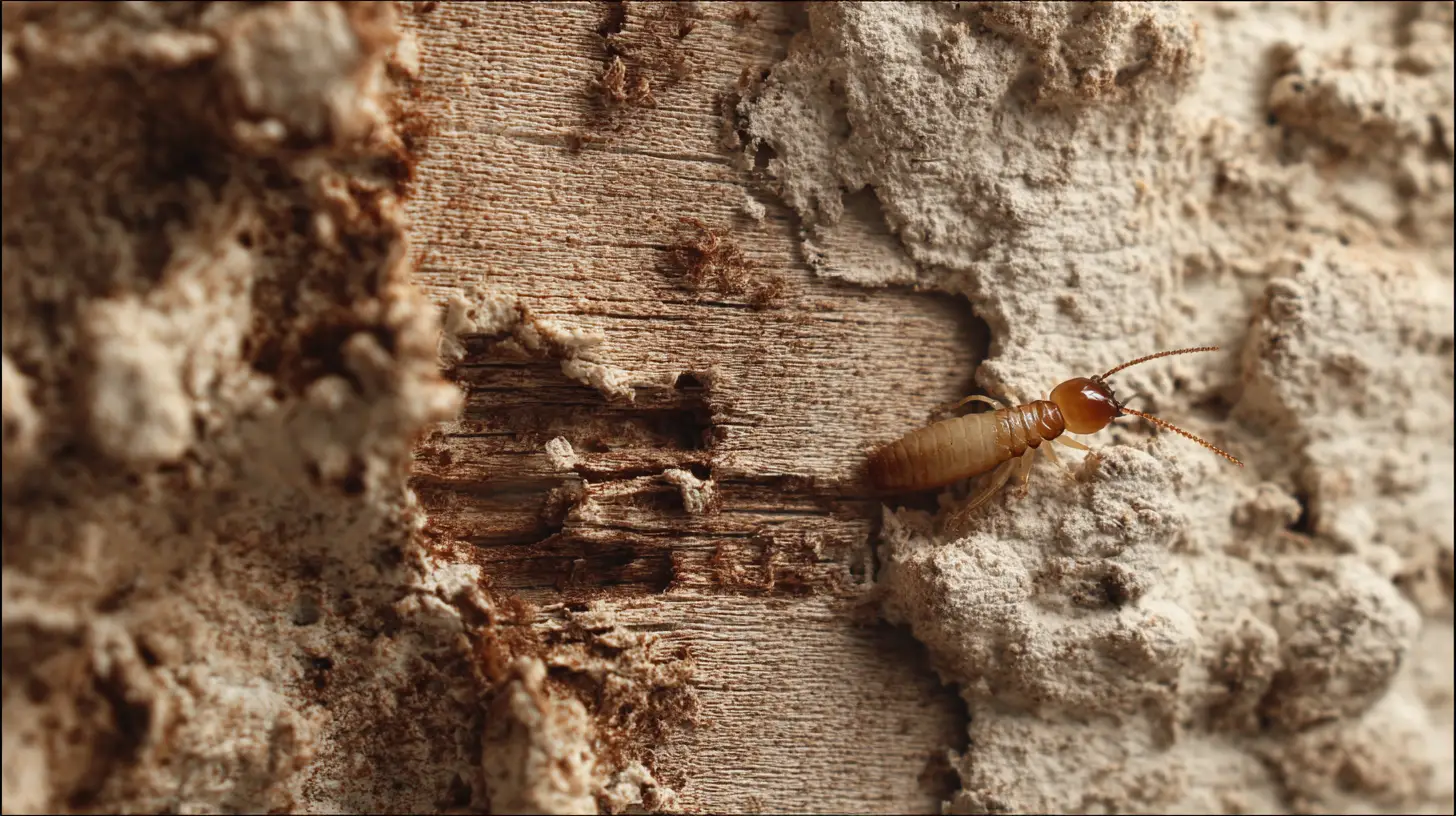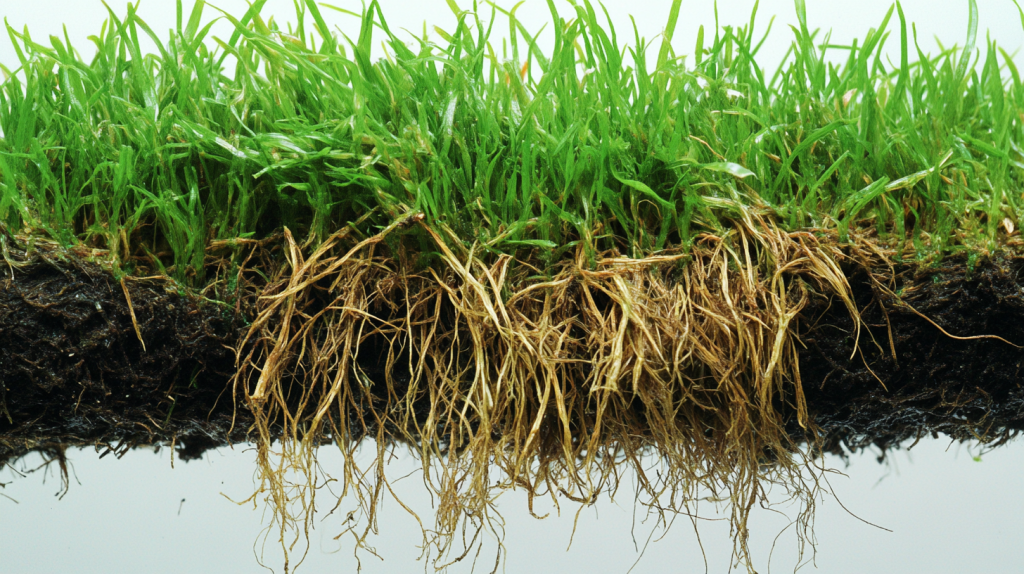
Table of Contents
If you’ve noticed your Venice lawn looking a bit lackluster despite regular watering and fertilizing, the problem might be beneath the surface. Core aeration could be the solution your St. Augustine grass desperately needs—especially in our unique Southwest Florida conditions.
Key Takeaways
- Perfect Timing Matters: The optimal window for core aeration in Venice is mid-April to early June, when St. Augustine grass is actively growing but not stressed by summer heat.
- Not All Venice Soils Are Equal: While Venice has predominantly sandy soil, many newer developments use clay fill that compacts severely. Both soil types benefit from aeration, but for different reasons.
- Frequency Depends on Use: High-traffic lawns or those on clay fill may need annual aeration, while typical Venice residential lawns can often go 2 years between aerations.
- Visible Benefits: After core aeration, Venice homeowners typically notice better water absorption, reduced pooling after rain, more efficient irrigation, and stronger, greener turf.
- DIY vs. Professional: While DIY aeration can save money, professional services (typically $75-$150 for average Venice lawns) often deliver better results and eliminate risk to irrigation systems.
- Post-Aeration Care is Essential: Proper watering and optional topdressing with compost after aeration maximizes benefits for Venice lawns.
What Is Core Aeration and Why Do Venice Lawns Need It?
Core aeration is a specialized lawn care technique that removes small plugs of soil and thatch from your turf. This process creates pathways for air, water, and nutrients to reach the root zone, helping your grass develop a stronger, more resilient root system.
In Venice, even our sandy soils can become compacted over time from foot traffic, lawn equipment, and especially in newer developments where heavy clay fill was used during construction. When soil becomes compacted, grass roots struggle to grow, water runs off instead of soaking in, and your lawn becomes more vulnerable to drought, disease, and pest problems.
Core aeration in Venice is particularly important for St. Augustine grass—our region’s most common turfgrass—which can develop thick thatch layers that block nutrients from reaching the soil.
Benefits of Core Aeration for Venice Lawns
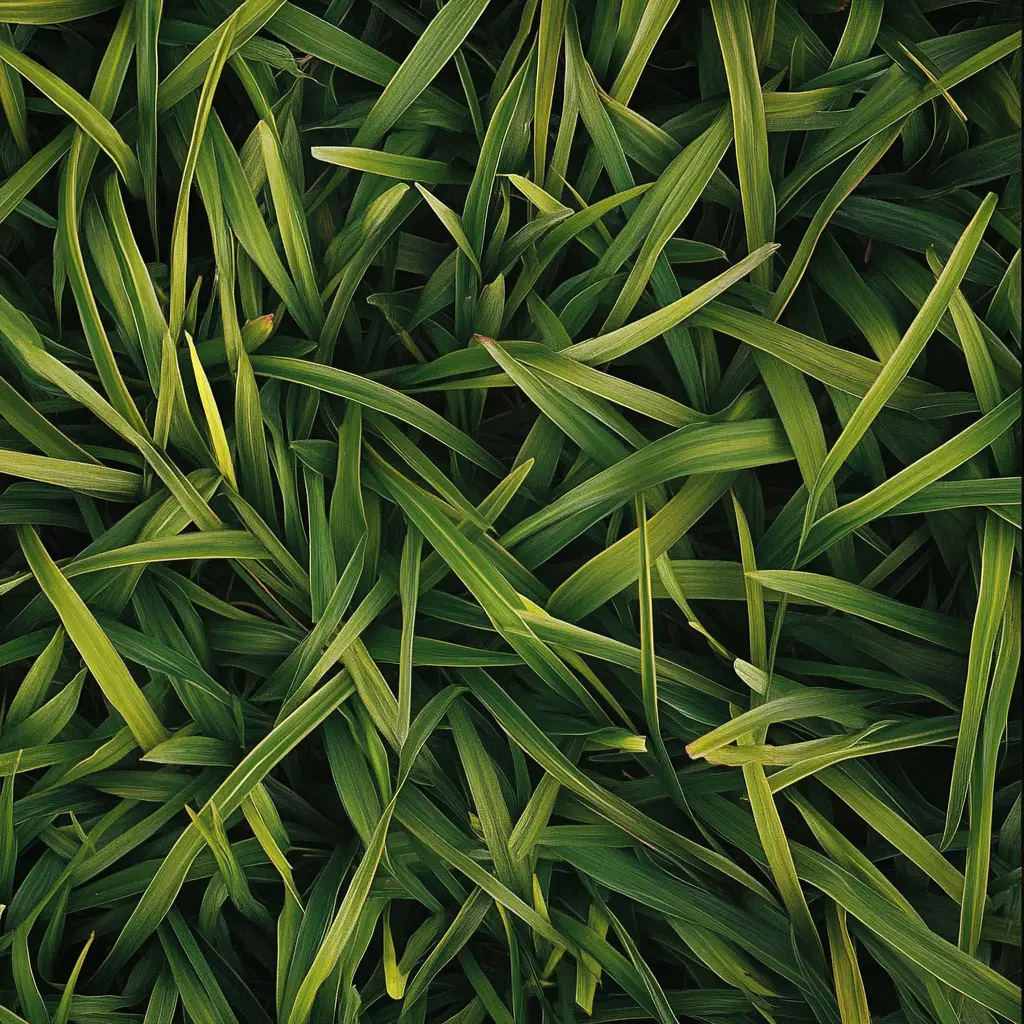
Relieves Soil Compaction
Florida’s soils, including Venice’s sandy soil and the clay fill often used in new developments, can become severely compacted. Core aeration breaks up this compaction by removing plugs of soil, creating space for roots to grow deeper and stronger. A lawn with proper soil structure is more resistant to drought stress and damage from foot traffic.
Improves Water and Nutrient Absorption
After core aeration, water and nutrients can penetrate deeper into the soil rather than running off the surface. This means your irrigation system works more efficiently, and your fertilizer delivers more value. Venice homeowners often notice significantly less water pooling and better lawn response to irrigation after aeration.
Reduces Thatch Buildup
St. Augustine grass naturally develops thatch—that spongy layer of dead and living plant material between the grass blades and the soil surface. When thatch exceeds ½ inch, it can block water, fertilizer, and air from reaching the roots. Core aeration helps break up this thatch layer by introducing soil microbes that accelerate decomposition.
Enhances Overall Turf Health
A properly aerated lawn develops stronger roots and greater density. This naturally helps your lawn resist weeds, certain pests, and common Florida lawn diseases. During Venice’s rainy season, an aerated lawn handles heavy downpours more effectively, reducing disease pressure from excessive moisture.
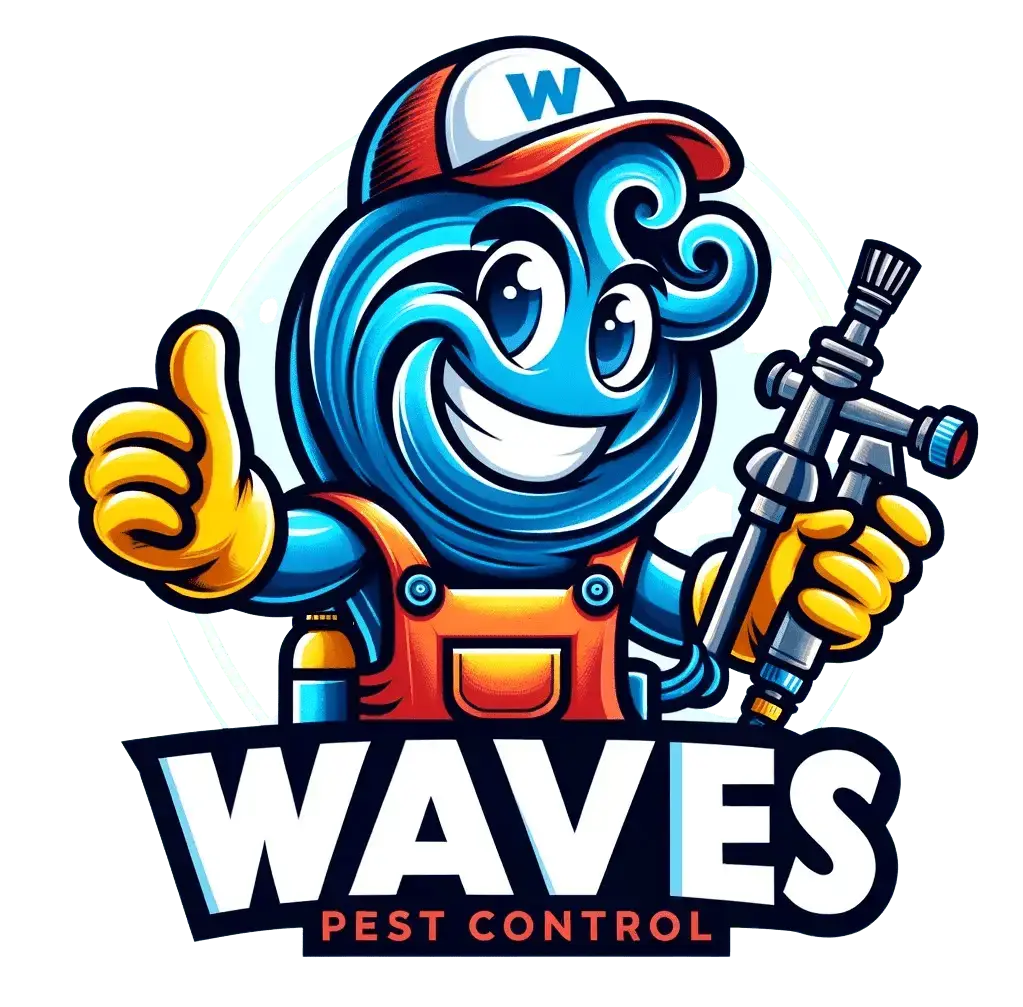
Get Pest-Free Today!
Trust Waves Pest Control for expert pest solutions in Florida. Call now or request your free quote online!
Request a QuoteBest Time for Core Aeration in Venice, Florida
Timing is crucial for successful core aeration in Venice. The goal is to aerate when your St. Augustine grass is actively growing and can quickly recover from the process.
Late Spring to Early Summer is Ideal
In Venice, the optimal window for core aeration is between mid-April and early June. By this time, St. Augustine grass has fully greened up and entered its active growth phase, but the intense heat and daily thunderstorms of deep summer haven’t arrived yet.
Core aeration during this period allows your lawn to heal quickly as temperatures warm and spring rains begin, maximizing the benefits of the process.
Avoid Stressful Periods
Never aerate your Venice lawn when it’s under stress from extreme heat, drought, or disease. Late June through August brings very high temperatures and sometimes irregular rainfall patterns—not ideal conditions for aeration. Similarly, winter and early spring (when St. Augustine growth slows significantly) are poor times for aeration.
Consider a Fall Aeration Only if Necessary
While spring is the primary aeration season, Venice lawns with severe compaction issues might benefit from a secondary aeration in early fall (September). The grass is still growing actively enough to recover, but don’t aerate after mid-October when growth rates decline.
Venice’s Unique Soil and Climate Considerations
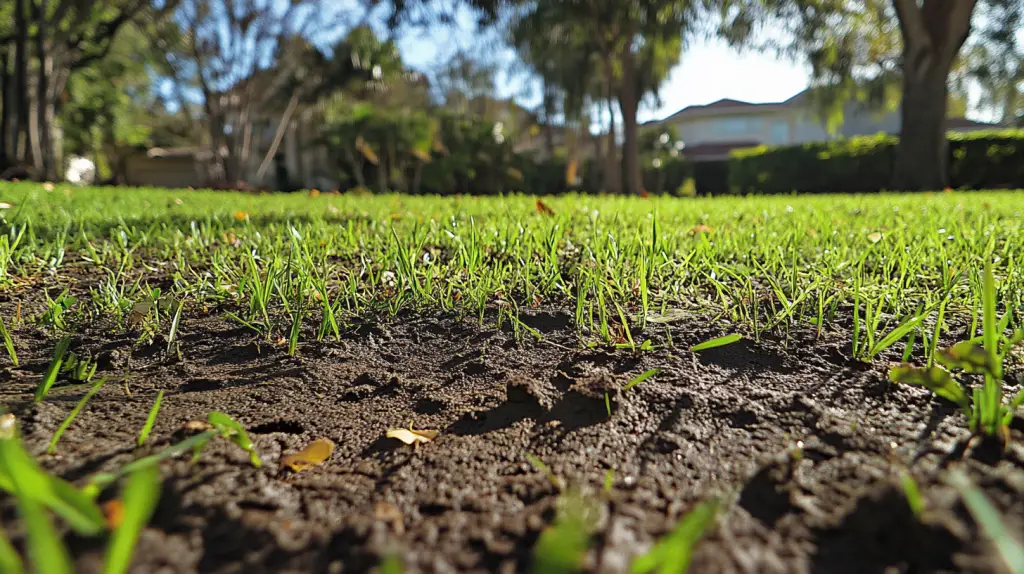
Sandy vs. Clay Fill Soils
Many established Venice neighborhoods have naturally sandy soils, which don’t compact as severely as clay but can still develop a dense layer that restricts root growth. However, newer developments often use imported clay or fill soil that compacts severely. If your lawn was sodded on builder’s fill, core aeration is especially critical to break through that dense layer.
Water Table and Drainage Issues
Being a coastal community, Venice has areas with high water tables and periodic flooding concerns. Core aeration helps improve surface drainage, allowing rainfall to soak in rather than running off. However, never aerate when the ground is waterlogged—wait until soil is just moist (a day or two after rain is perfect).
Seasonal Weather Patterns
Venice experiences distinct dry (winter/spring) and wet (summer) seasons. Plan your aeration with these patterns in mind. If spring has been dry, water thoroughly 1-2 days before aerating to soften the soil for better plug removal. Avoid aerating immediately before major storms, as heavy rain can wash soil from the aeration holes.
How to Tell if Your Venice Lawn Needs Core Aeration
Not every lawn needs annual aeration. Look for these signs that your St. Augustine grass could benefit from core aeration:
- Water pools on the lawn after rain or irrigation
- Soil feels extremely firm (you can’t easily push a screwdriver 6 inches into the ground)
- Grass appears thin or patchy despite proper fertilizing and watering
- Thatch layer exceeds ½ inch
- Lawn was recently sodded on new construction (may need aeration after 2-3 years)
How Often Should You Aerate Your Venice Lawn?
The frequency of core aeration depends on your specific lawn conditions:
High-Traffic or Clay-Soil Lawns
If your lawn sees heavy use from kids, pets, or vehicles, or if it’s installed over clay fill, annual core aeration is recommended. Even Venice’s sandy soils can compact under consistent foot traffic or equipment use.
Average Home Lawn
For typical residential St. Augustine lawns in Venice without unusual stress, aerating every two years is usually sufficient. Many homeowners make spring aeration a biennial routine to maintain soil health.
Newly Sodded Lawns
Generally, new St. Augustine sod won’t need aeration in its first year. By the second or third year, however, the soil may begin to settle and compact. Consider scheduling your first aeration around this time.
Tips for Successful Core Aeration in Venice
Whether you DIY or hire a pro, these tips will help you get the most from your core aeration:
Preparation
- Mow your lawn slightly shorter than usual (but not below 2.5 inches for St. Augustine)
- Water 1-2 days before aerating so soil is moist but not soggy
- Mark all obstacles including sprinkler heads, shallow utility lines, and valve boxes
During Aeration
- Use only core/plug aerators that remove soil cores, not solid spike aerators that simply punch holes
- Make multiple passes in different directions for thorough coverage
- Focus extra attention on visibly compacted areas like walkways and play areas
After Aeration
- Leave the soil plugs on the lawn—they’ll break down naturally within 1-2 weeks
- Water thoroughly after aeration to help the lawn begin recovery
- Consider topdressing with a thin layer (¼ inch) of compost to improve soil structure
- Avoid heavy foot traffic for a week after aeration if possible
Post-Aeration Lawn Care in Venice
Core aeration creates the perfect opportunity to improve your soil. Consider these follow-up treatments:
Fertilization
Spring aeration (April-May) pairs perfectly with fertilization before Venice’s summer fertilizer restrictions begin. The aeration holes allow nutrients to reach the root zone more effectively. Remember that Sarasota County prohibits nitrogen and phosphorus fertilizers from June 1 to September 30.
Topdressing
Applying a light layer of compost after aeration can dramatically improve soil structure, especially in Venice’s typically sandy soils. Compost adds organic matter that improves water retention and provides slow-release nutrients.
Overseeding (If Needed)
While St. Augustine is typically established from sod rather than seed, any bare patches in your lawn can be addressed after aeration with proper plugs or sod pieces. The aeration process creates ideal conditions for new grass to establish.
Final Thoughts on Core Aeration
Core aeration is one of the most beneficial yet often overlooked lawn care practices for Venice homeowners. By relieving soil compaction, improving water infiltration, and reducing thatch, it addresses the root causes of many common lawn problems.
For St. Augustine lawns in our unique climate and soil conditions, regular core aeration (every 1-2 years) can make the difference between a struggling lawn and a lush, resilient one that handles Venice’s intense summer heat and heavy rains with ease.
Whether you choose to tackle aeration yourself or hire a local professional, this simple procedure delivers exceptional returns in lawn health and appearance. Your Venice lawn will thank you with deeper roots, better drought resistance, and a vibrant green color that makes your property stand out in the neighborhood.
Frequently Asked Questions (FAQs)
Will core aeration damage my irrigation system?
When properly done, core aeration should not damage your irrigation system. However, it’s essential to mark all sprinkler heads, shallow pipes, and valve boxes before aerating. Professional aerators in Venice are typically experienced at working around irrigation systems. If doing it yourself, flag all components and avoid aerating directly over shallow irrigation lines.
How long will it take my Venice lawn to recover from core aeration?
In Venice’s warm climate during the recommended spring aeration period (April-June), St. Augustine grass typically begins filling in the aeration holes within 7-10 days. Complete recovery usually occurs within 2-3 weeks. This recovery time is one reason why timing is so important—aerating during active growth ensures quick healing.
Should I remove the soil plugs after core aeration?
No, it’s best to leave the soil plugs on your Venice lawn after aeration. These plugs contain beneficial microorganisms that help break down thatch. They will naturally dissolve back into the lawn within 1-2 weeks, especially with irrigation or rainfall. In Venice’s climate, the decomposition happens relatively quickly.
Can I water or mow my lawn right after core aeration?
You should water your lawn thoroughly after core aeration to help the recovery process begin. However, wait about a week before mowing to give the turf time to begin healing. When you do mow, ensure your blade is sharp to avoid pulling on the recovering grass.
Is core aeration the same as dethatching?
No, though they address related issues. Core aeration removes small plugs of soil and thatch to improve soil structure and create pathways for air, water, and nutrients. Dethatching specifically removes the layer of dead plant material (thatch) from the surface using specialized rakes or machines. For thick St. Augustine lawns in Venice, core aeration is generally preferred as it’s less stressful on the turf while still helping manage thatch.
What should I do if my Venice lawn is still compacted after aeration?
If your lawn remains compacted after one aeration session, several factors could be at play. Very severe compaction (especially in new construction with clay fill) may require multiple aeration treatments over consecutive growing seasons. Consider a follow-up aeration the next year, potentially combined with topdressing using compost to improve soil structure. For extremely problematic areas, consult a local Venice lawn care professional about more intensive remediation options.
Can I aerate my Venice lawn during water restrictions?
Yes, core aeration is still possible during water restrictions. In fact, aeration improves water efficiency, helping your lawn make better use of limited irrigation. Time your aeration to coincide with your allowed watering days, moistening the soil 1-2 days before aeration. Many Venice lawn care professionals are familiar with working around water restrictions and can schedule service accordingly.
Is compost topdressing necessary after core aeration in Venice?
While not absolutely necessary, compost topdressing after aeration provides significant benefits for Venice lawns. A thin layer (¼ inch) of quality compost helps improve sandy soil structure, adds organic matter, enhances microbial activity, and provides slow-release nutrients. For lawns on new construction or with poor soil quality, this combination of aeration plus topdressing can dramatically accelerate improvement.
Final Thoughts on Core Aeration for Venice Lawns
Core aeration is one of the most beneficial yet often overlooked lawn care practices for Venice homeowners. By relieving soil compaction, improving water infiltration, and reducing thatch, it addresses the root causes of many common lawn problems.
For St. Augustine lawns in our unique climate and soil conditions, regular core aeration (every 1-2 years) can make the difference between a struggling lawn and a lush, resilient one that handles Venice’s intense summer heat and heavy rains with ease.
Whether you choose to tackle aeration yourself or hire a local professional, this simple procedure delivers exceptional returns in lawn health and appearance. Your Venice lawn will thank you with deeper roots, better drought resistance, and a vibrant green color that makes your property stand out in the neighborhood.

